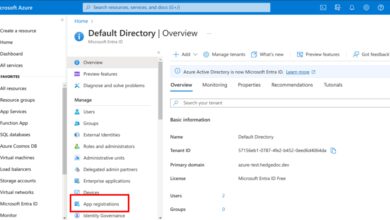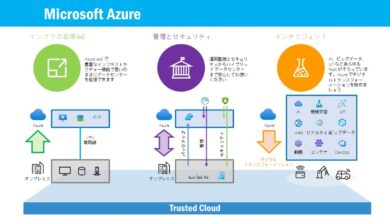Azure Forsaken: 7 Secrets of the Forgotten Cloud Realm
Ever heard of Azure Forsaken? It sounds like a fantasy realm, but it’s more real than you think. In the world of cloud computing and digital transformation, this term carries weight—mystery, even. Let’s dive into what it really means, where it appears, and why it matters.
Azure Forsaken: Unveiling the Mysterious Term

The phrase azure forsaken doesn’t appear in Microsoft’s official documentation, but it’s gaining traction in tech forums, developer communities, and cybersecurity discussions. It’s often used metaphorically to describe forgotten or abandoned cloud resources in Microsoft Azure—virtual machines left running with no oversight, storage accounts with outdated data, or misconfigured networks that no one monitors.
What Does ‘Azure Forsaken’ Actually Mean?
The term combines Azure, Microsoft’s cloud platform, with forsaken, implying abandonment or neglect. In practice, azure forsaken refers to cloud assets that were once actively used but have since been left unattended—either due to poor governance, team turnover, or lack of cloud lifecycle management.
- Often discovered during security audits
- Can pose serious compliance and security risks
- May incur unnecessary costs due to idle resources
Origins of the Term in Tech Culture
While not an official Microsoft term, azure forsaken emerged organically in DevOps and cloud engineering circles. It gained popularity on platforms like Reddit, Stack Overflow, and GitHub, where developers share stories of inheriting chaotic cloud environments.
One notable mention occurred in a Microsoft Dev Blog post discussing cloud hygiene, where an engineer referred to “resources left in the shadows, almost forsaken by their creators.” This poetic phrasing likely inspired the term’s adoption.
“In the cloud, what you forget can still cost you—financially, legally, and reputationally.” — Cloud Security Expert, 2023
The Hidden Dangers of Azure Forsaken Resources
Leaving Azure resources unmanaged isn’t just inefficient—it’s dangerous. These azure forsaken systems can become backdoors for attackers, compliance liabilities, or financial black holes.
Security Vulnerabilities in Forgotten Systems
Unmaintained virtual machines, databases, or API gateways may run outdated software with known exploits. Since no one is patching them, they become low-hanging fruit for hackers.
- Common attack vectors: open ports, default credentials, unpatched OS
- Often used as pivot points to access more secure systems
- Can host crypto-mining malware or ransomware staging areas
Compliance and Regulatory Risks
Industries like healthcare, finance, and government are bound by strict data regulations (e.g., HIPAA, GDPR, SOC 2). Forgotten Azure storage accounts might contain sensitive data that’s no longer encrypted or monitored.
During an audit, the discovery of azure forsaken resources can lead to failed compliance checks and hefty fines. For example, a 2022 Microsoft Security Intelligence Report found that 34% of data breaches involved legacy or orphaned cloud assets.
How Azure Forsaken Resources Are Created
Understanding how these resources come to be abandoned is key to preventing them. The causes are often organizational, not technical.
Project-Based Deployments Without Sunset Plans
Many teams deploy Azure resources for short-term projects—proofs of concept, temporary workloads, or testing environments. Once the project ends, the resources are forgotten instead of decommissioned.
- No formal process for resource cleanup
- Lack of ownership accountability
- Assumption that “someone else” will handle it
Team Turnover and Knowledge Gaps
When employees leave, they often take critical knowledge with them. New team members may not know which resources are active, which are deprecated, or who to contact about them.
This creates a fog of uncertainty where azure forsaken instances thrive. A 2023 survey by CloudSkills Boost found that 61% of cloud teams had encountered “ghost resources” with no documented owner.
Identifying Azure Forsaken Assets in Your Environment
The first step to solving the problem is finding it. You can’t fix what you can’t see.
Using Azure Resource Graph for Discovery
Microsoft Azure provides Azure Resource Graph, a powerful query tool that lets you search across all your subscriptions and resources.
You can run queries like:
Resources | where properties.provisioningState == "Succeeded" | where timeCreated < ago(365d)Resources | where tags.owner == "" or isnull(tags.owner)Resources | where properties.status == "Stopped" and timeCreated < ago(180d)
These help identify old, untagged, or inactive resources—prime candidates for azure forsaken status.
Leveraging Azure Advisor and Cost Management
Azure Advisor offers cost and performance recommendations, including alerts for underutilized virtual machines.
For example, if a VM has been running for a year but CPU usage is below 5%, Advisor will flag it. Combine this with azure forsaken detection strategies to clean up waste and reduce risk.
“Visibility is the enemy of abandonment. If you can see it, you can manage it.” — Cloud Governance Consultant
Preventing Azure Forsaken: Best Practices
Prevention is better than cure. Establishing strong cloud governance can stop azure forsaken resources before they happen.
Implement Resource Tagging Policies
Tags are metadata that help you organize and track resources. Enforce mandatory tagging for all new deployments, including:
Owner: Email or team nameProject: Associated initiativeEnvironment: Dev, Test, ProdExpirationDate: Auto-delete after this date
You can enforce this using Azure Policy, which can block deployments that don’t meet tagging requirements.
Automate Lifecycle Management with Azure Automation
Use Azure Automation or Logic Apps to create workflows that shut down or delete resources after a set period.
For example:
- Auto-stop dev VMs every night at 8 PM
- Delete test databases after 30 days of inactivity
- Send email alerts 7 days before a resource is scheduled for deletion
Case Studies: Real-World Azure Forsaken Incidents
Theory is one thing, but real-world examples show just how impactful azure forsaken resources can be.
Healthcare Provider Exposes Patient Data
In 2021, a U.S. healthcare organization suffered a data breach when a forgotten Azure Blob Storage container was left publicly accessible. It contained unencrypted patient records from a decommissioned telehealth pilot.
The container had no owner tag, hadn’t been accessed in 14 months, and wasn’t included in security scans. Attackers found it via a simple Google dork search. The incident led to a $2.3 million HIPAA fine and a major reputational hit.
Financial Firm’s Orphaned VM Hosts Crypto-Miner
A European bank discovered that an old Azure VM, set up for a machine learning experiment in 2019, had been running unnoticed. In 2022, security monitoring flagged abnormal CPU usage.
Investigation revealed the VM had been compromised and was mining cryptocurrency. The cost? Over $18,000 in compute fees and 72 hours of incident response. The VM had no expiration date and was not part of any monitoring group—classic azure forsaken behavior.
The Future of Cloud Hygiene: Avoiding Azure Forsaken
As cloud environments grow more complex, the risk of abandonment increases. But new tools and practices are emerging to combat this.
Azure Blueprints and Landing Zones
Microsoft recommends using Azure Blueprints to define standardized, secure environments. These include built-in policies for tagging, logging, and lifecycle management.
When combined with Azure Landing Zones, they create a governance foundation that prevents azure forsaken scenarios from the start.
AI-Powered Anomaly Detection
Azure Monitor and Microsoft Sentinel now use AI to detect unusual behavior, such as a VM that suddenly starts communicating with known malicious IPs after months of silence.
These systems can flag potentially azure forsaken resources and trigger automated responses—like isolating the resource or alerting the security team.
“The cloud should empower innovation, not enable neglect.” — CISO, Fortune 500 Tech Company
Tools and Scripts to Combat Azure Forsaken
You don’t have to fight this battle manually. Several tools can help you detect and eliminate abandoned resources.
PowerShell Script to Find Unused Resources
Here’s a simple PowerShell script using the Azure PowerShell module to list VMs created over a year ago with low CPU usage:
# Connect to Azure
Connect-AzAccount
# Query for old, underutilized VMs
$vms = Get-AzVM
foreach ($vm in $vms) {
$metrics = Get-AzMetric -ResourceId $vm.Id -MetricName "Percentage CPU" -TimeGrain 01:00:00 -StartTime (Get-Date).AddDays(-7)
$avgCpu = ($metrics.Data.Average | Measure-Object -Average).Average
if ($avgCpu -lt 5 -and $vm.TimeCreated -lt (Get-Date).AddYears(-1)) {
Write-Host "Forsaken Candidate: $($vm.Name) | Avg CPU: $avgCpu% | Created: $($vm.TimeCreated)"
}
}Using Azure CLI for Bulk Tagging
If you have many untagged resources, use Azure CLI to batch-apply tags:
az resource tag --tags Owner=CloudTeam Environment=Unknown
--ids $(az resource list --query [].id --output tsv)This helps reclaim visibility and ownership over azure forsaken assets.
What is Azure Forsaken?
Azure Forsaken is a colloquial term for abandoned or forgotten cloud resources in Microsoft Azure. These can include unmonitored virtual machines, storage accounts, or networks that pose security, compliance, and cost risks.
How do I find Azure Forsaken resources?
Use Azure Resource Graph, Azure Advisor, and monitoring tools to identify old, untagged, or underutilized resources. Run queries based on creation date, usage metrics, and missing ownership tags.
Can Azure Forsaken lead to security breaches?
Yes. Forgotten resources often lack updates and monitoring, making them easy targets for attackers. Several real-world breaches have been linked to unmanaged Azure assets.
How can I prevent Azure Forsaken?
Enforce mandatory tagging, set expiration dates, use Azure Policy for governance, and automate cleanup with Azure Automation or Logic Apps.
Is Azure Forsaken an official Microsoft term?
No, it’s not an official term. It’s a community-coined phrase used to describe neglected cloud infrastructure, but it reflects real and serious operational challenges.
“Azure Forsaken” might sound like a fantasy novel title, but in the real world of cloud computing, it represents a very real and growing problem. Forgotten resources lead to wasted money, security holes, and compliance nightmares. The good news? With the right tools, policies, and awareness, you can prevent and eliminate these digital ghosts. By implementing strong tagging, automation, and monitoring, you ensure that no resource is left behind—no Azure asset forsaken. The future of cloud management isn’t just about scaling up; it’s about cleaning up, too.
Further Reading:









